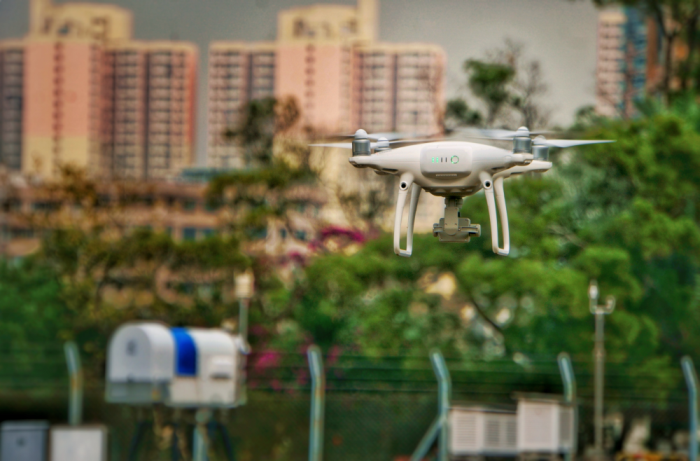Weather and Drone Flying
Weather and Drone Flying
YIP-ling Jennifer
January 2022
Drone flying has become increasingly accessible to the general public. Aspiring to become a drone pilot? Let's see how different weather elements impact drone flying.
Wind
Controlling a drone can be particularly complicated under windy condition. The wind limit a drone can withstand is model-dependent and is usually indicated in its operation manual. More energy is consumed when flying against strong headwind that is approaching the limit. As a result, the drone might get sluggish since its radio receiver isn't getting enough power supply. If the wind speed is above the threshold, a pilot might lose control of the drone as the drone would not have enough forward momentum to keep flying.
Controlling a drone can be particularly complicated under windy condition. The wind limit a drone can withstand is model-dependent and is usually indicated in its operation manual. More energy is consumed when flying against strong headwind that is approaching the limit. As a result, the drone might get sluggish since its radio receiver isn't getting enough power supply. If the wind speed is above the threshold, a pilot might lose control of the drone as the drone would not have enough forward momentum to keep flying.

Figure 1 Wind shear, the sudden change in wind speed and direction over a very short distance, negatively impacts drone stability.
On the other hand, wind shear, the sudden change in wind speed and direction over a very short distance, negatively impacts drone stability. Flying behind an obstacle with constantly changing wind can make simple manoeuvres arduous.
Precipitation
While some drones are waterproof, most can't tolerate water. Rainwater damages electrical components and renders a drone unusable. Consider rescheduling your flight if rain is coming.
While some drones are waterproof, most can't tolerate water. Rainwater damages electrical components and renders a drone unusable. Consider rescheduling your flight if rain is coming.
Visibility
Fog, mist, haze and shower hampers visibility and blocks nearby drones from view. It is advisable to keep your drone in line of sight at all times. Don't want to lose your drone? Delay a flight when visibility is low!
Fog, mist, haze and shower hampers visibility and blocks nearby drones from view. It is advisable to keep your drone in line of sight at all times. Don't want to lose your drone? Delay a flight when visibility is low!
Temperature
As most drones can operate between 0oC and 40oC, Hong Kong temperatures are favourable for drone flying almost all year round. Nevertheless, if you're to fly your drones through snowy landscapes during your travels, be sure to keep a close watch on battery level. Low temperatures reduce battery life and would, in turn, reduce flying time and drone range.
As most drones can operate between 0oC and 40oC, Hong Kong temperatures are favourable for drone flying almost all year round. Nevertheless, if you're to fly your drones through snowy landscapes during your travels, be sure to keep a close watch on battery level. Low temperatures reduce battery life and would, in turn, reduce flying time and drone range.

Figure 2 Don't forget to check the weather forecast when planning your next drone flight.
When planning your next drone flight, on top of familiarizing yourself with your drone's operation manual and local regulations, don't forget to check the weather forecast. Re-route, delay or even postpone a flight if the weather is unfavourable. Happy flying!